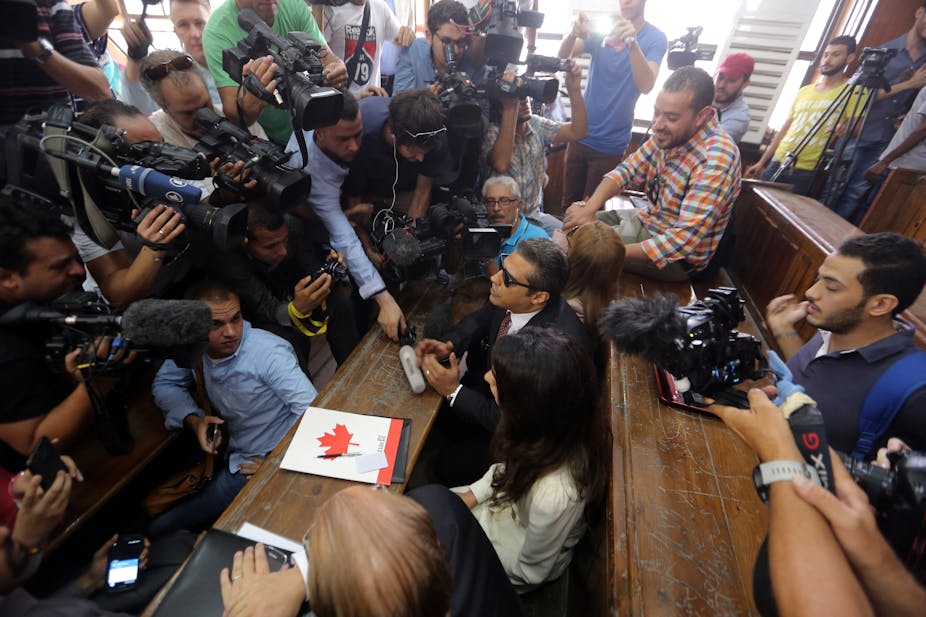The news that two British journalists and their unnamed Iraqi colleague were arrested and charged by the Turkish authorities [though released following publication of this article] for “engaging in terror activity” serves to illustrate once again that these are the most perilous of times for those seeking to report conflict and civil unrest.
The three are employees of Vice News. Correspondent Jake Hanrahan, photographer Philip Pendlebury and their unnamed “fixer” were arrested while covering clashes between Turkish security forces and the Patriotic Revolutionary Youth Movement – the youth wing of the outlawed Kurdistan Workers’ Party (PKK).
The charges of engaging in terror activities have been utterly rejected by those representing the three. Tahir Elci the head of the Diyarbakir Bar Association in south-east Turkey said: “I don’t believe the group carried out any activity outside of journalism.” The charges were actions, he said, “aimed at intimidating journalists covering the conflict in the region”.
This repressive behaviour is nothing new in Turkey. The country’s wide ranging anti-terrorism measures have effectively led to an increasingly hostile environment for journalists. For several years, as the New York Times reported, Turkey has jailed more journalists than any other country, and this year, it ranked 149th out of 180 countries on the Reporters Without Borders news media freedom index.
Indeed, on September 1, two days after the Vice reporters were held, Turkish police raided the Ankara-based offices of a media group critical of president Recep Tayyip Erdoğan and in December last year upwards of 23 people from media organisations, including the editor in chief of Zaman, Turkey’s largest daily newspaper, were detained.
Global threat
And of course Turkey is not alone in seeking to suppress journalistic freedoms. According to the Committee to Protect Journalists (CPJ) the Egyptian authorities are holding the highest number of journalists behind bars since the organisation began keeping records. As of August 12 this year, 23 correspondents were in prison. On August 29, three Al Jazeera journalists – Mohamed Fadel Fahmy, Baher Mohamed, and Peter Greste – were convicted of “aiding a terrorist organisation”, spreading false news, and working without a license.
International condemnation is always forthcoming in these cases but it appears to do nothing to dampen the zeal with which, to quote the CPJ, Egyptian President Abdel Fattah el-Sisi “criminalises basic reporting and gives a broad definition of terrorist crimes that can be used to threaten and imprison journalists”.
So what’s happening here? Richard Sambrook, director of the Centre for Journalism at Cardiff University and president of the International News Safety Institute (INSI), perceives a development where independent journalism is simply not tolerated. He told me:
The jail sentences for Al Jazeera journalists in Egypt and the arrest of the Vice team in Turkey show that in some countries journalism is no longer recognised as neutral. There is increasing confusion between journalism and activism with authorities assuming if you are critical in any way you are aligned with their enemies. This is a growing threat to free speech.
This failure to recognise a journalist’s neutrality is something that deeply concerns Salim Aman a reporter who has covered the conflicts in Somalia, Kenya and Rwanda. For him the days of journalists being treated with respect, as independent observers, as messengers of the truth, are over. Echoing Sambrook’s point, Amin has written: “We are now seen as part of one side or the other, rather than as independent and impartial observers.”
According to Amnesty International merely being affiliated with the media and possessing a press card is highly dangerous in countries such as Mexico, Columbia or Pakistan. The organisation has warned that governments all over the world appear to be growing less tolerant of reporting on controversial issues.
Indeed, the figures suggest it is right – as a quick look at the journalists under attack section of INSI website will prove. This grim catalogue of deaths around the world shows that in past month alone, a radio journalist was shot dead in the Philippines, a South Sudanese reporter (the seventh killed there this year) was murdered after the president threatened to “kill reporters” and a radio broadcaster who regularly criticised the Brazilian government was shot dead on air.
These tragic deaths show that in some parts of the world the execution of journalists for doing their job is now an almost daily reality. I implore you to visit INSI and see for yourself. Go to the casualty data base or visit the CPJ and find out the statistical details concerning the 61 journalists killed in 2014.
And already, according to INSI’s biannual report, Killing the Messenger, a total of 60 media workers have been killed in the first half of 2015. The report reveals that South Sudan and Yemen were the second bloodiest countries for journalists in the first half of 2015, with six members of the news media killed in each place. Iraq and Libya are close behind in joint fourth place with five journalists losing their lives in each.
And the first most deadly country for journalists to work in the first half of 2015? Well, for the first time a “peaceful western democracy” was listed. Who could forget the eight people murdered at satirical magazine Charlie Hebdo, in their offices, in central Paris, in January?
The bleak reality is journalists are continually under threat. As the Global Investigative Journalism Network has highlighted, over the past decade or so only one in ten cases of crimes against journalists, media workers, and online producers has led to a conviction. In days like these, when we need independent journalism more than ever, there is clearly the pressing need to find ways in which to adequately protect those who risk their lives on a regular basis.

